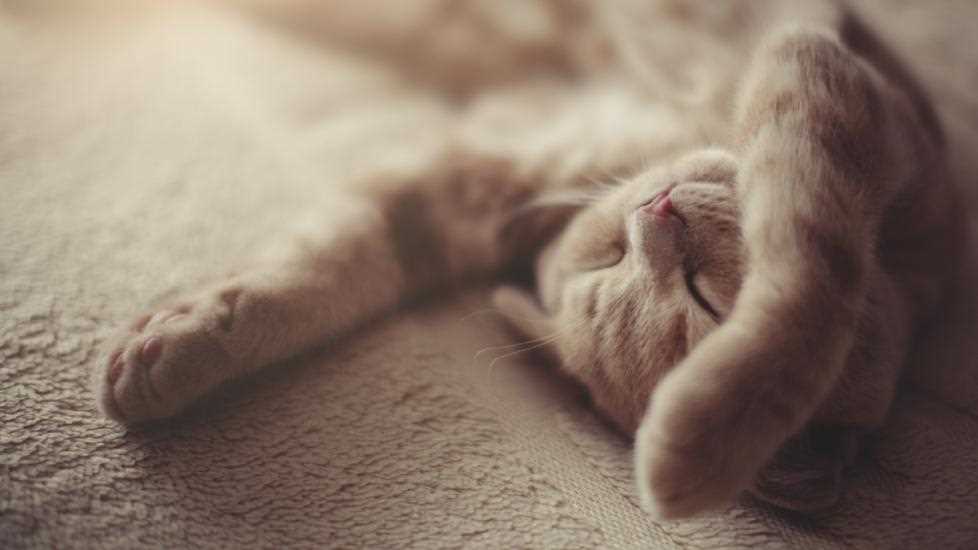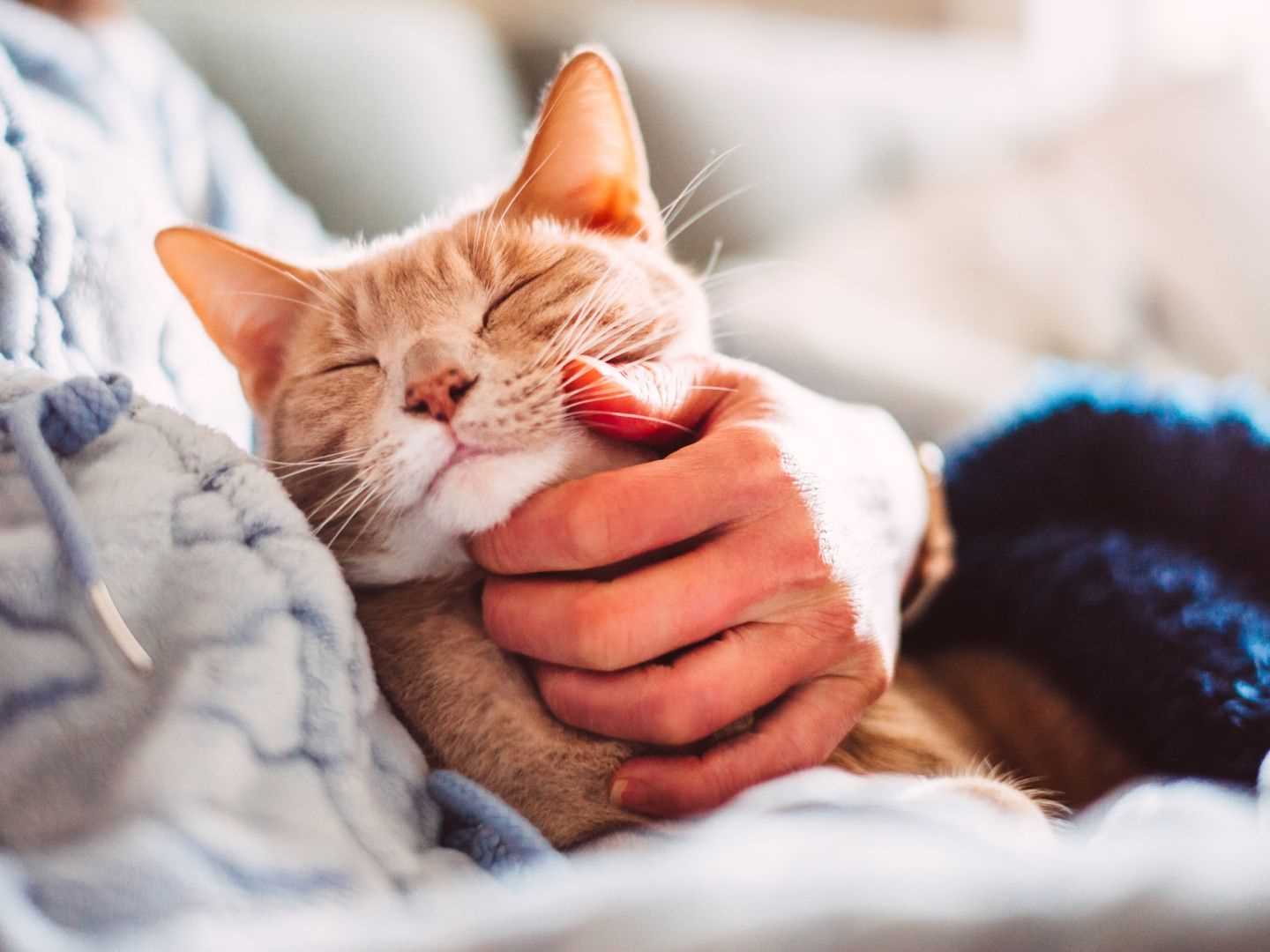



When I curl up next to my human, it’s not just for warmth. This behavior stems from a deep-seated instinct to seek safety and comfort in numbers. As a Scottish Fold, I thrive on companionship, and being close to my human makes me feel secure and loved.
Research indicates that many felines prefer proximity to their humans due to the sense of security it provides. This closeness is not only about warmth but also about forming a bond. Cats are social creatures, and snuggling reinforces the trust and affection we share with our owners.
Additionally, the rhythmic sound of a human’s heartbeat can be soothing. This familiar sound mimics the environment I grew up in, fostering a calming atmosphere. If your furry friend chooses to lounge next to you, it’s a testament to the strong connection we’ve built over time.
Understanding Your Feline’s Affectionate Behavior
When I curl up next to my human, it’s not just for warmth; it’s a sign of trust and bonding. My presence beside them indicates that I consider them part of my family. This physical closeness helps strengthen our emotional connection, making me feel secure and loved.
Body Language Cues

Pay attention to my tail position and purring. These are clear indicators of my contentment. A gently swaying tail means I’m relaxed, while a steady purr signals that I am at ease beside you. When I knead on soft surfaces, this harkens back to my kitten days and shows that I’m comfortable enough to express my affection.
Territorial Behavior

By choosing to rest near you, I’m also marking my territory. This behavior is instinctual; my scent helps to create a safe space. It’s my way of saying, “You’re mine!” This reinforces our bond while allowing me to feel secure in my environment.
Creating a Comfortable Sleep Environment for Your Feline Friend

To ensure a restful night for my furry companions, I recommend providing a designated sleeping area with soft bedding. A cozy blanket or a cat bed can make a significant difference in their comfort. Choose a spot away from drafts and noise to help them feel secure.
Temperature plays a critical role. Maintaining a warm environment encourages relaxation. If your home tends to be chilly, consider using a heated cat bed or placing a heat pad beneath their blanket.
Lighting should be soft and soothing. Dimmer areas allow for a peaceful atmosphere, which is especially important during the night. If you have bright lights, consider using blackout curtains to block out harsh rays.
Additionally, keeping the area clean and free from clutter is essential. A tidy space reduces stress, allowing for a more peaceful sleep. Regularly wash their bedding to remove allergens and odors.
It’s wise to be mindful of any plants in the vicinity. Certain plants, like the epipremnum, can be harmful. Ensure that their sleeping area is clear of any toxic vegetation.
Lastly, consider playing with them before bedtime. Engaging in interactive playtime can help them expend energy, making it easier for them to settle down and enjoy their rest. A calm routine can greatly enhance their sleep quality.
FAQ:
Why does my cat prefer to sleep beside me instead of in its own bed?
Cats often seek comfort and security when they choose a sleeping spot. By sleeping next to you, your cat may feel safe and protected. This behavior can stem from their instinct to bond with their companions, as they view you as part of their family. Your warmth and scent can also make the area more inviting for them, reinforcing their choice to be close to you.
Is it a sign of affection when my cat sleeps next to me?
Yes, when your cat sleeps beside you, it’s generally a sign of affection and trust. Cats are social animals and enjoy the company of those they feel attached to. By choosing to sleep close to you, your cat is expressing a desire for companionship and is likely comfortable in your presence. This behavior often highlights the bond you share.
Should I let my cat sleep in my bed, or is it better for their sleep quality?
Allowing your cat to sleep in your bed is a personal choice and can strengthen your bond. Some cats may sleep better when they are near their owners, feeling more secure. However, if your cat’s presence disrupts your sleep, you might consider providing a cozy alternative nearby. Pay attention to your cat’s preferences and your comfort to find the best arrangement for both of you.
What does it mean if my cat changes sleeping spots frequently?
Frequent changes in sleeping spots can indicate your cat’s need for variety, comfort, or temperature regulation. Cats may move to find a warmer or cooler place depending on the climate. Additionally, if a cat feels anxious or insecure, it might change locations searching for a more comforting environment. Observing your cat’s behavior and preferences can provide insights into their needs and comfort levels.
Video:
When I curl up next to my human, it’s not just for warmth. This behavior stems from a deep-seated instinct to seek safety and comfort in numbers. As a Scottish Fold, I thrive on companionship, and being close to my human makes me feel secure and loved.
Research indicates that many felines prefer proximity to their humans due to the sense of security it provides. This closeness is not only about warmth but also about forming a bond. Cats are social creatures, and snuggling reinforces the trust and affection we share with our owners.
Additionally, the rhythmic sound of a human’s heartbeat can be soothing. This familiar sound mimics the environment I grew up in, fostering a calming atmosphere. If your furry friend chooses to lounge next to you, it’s a testament to the strong connection we’ve built over time.
Understanding Your Feline’s Affectionate Behavior
When I curl up next to my human, it’s not just for warmth; it’s a sign of trust and bonding. My presence beside them indicates that I consider them part of my family. This physical closeness helps strengthen our emotional connection, making me feel secure and loved.
Body Language Cues

Pay attention to my tail position and purring. These are clear indicators of my contentment. A gently swaying tail means I’m relaxed, while a steady purr signals that I am at ease beside you. When I knead on soft surfaces, this harkens back to my kitten days and shows that I’m comfortable enough to express my affection.
Territorial Behavior

By choosing to rest near you, I’m also marking my territory. This behavior is instinctual; my scent helps to create a safe space. It’s my way of saying, “You’re mine!” This reinforces our bond while allowing me to feel secure in my environment.
Creating a Comfortable Sleep Environment for Your Feline Friend

To ensure a restful night for my furry companions, I recommend providing a designated sleeping area with soft bedding. A cozy blanket or a cat bed can make a significant difference in their comfort. Choose a spot away from drafts and noise to help them feel secure.
Temperature plays a critical role. Maintaining a warm environment encourages relaxation. If your home tends to be chilly, consider using a heated cat bed or placing a heat pad beneath their blanket.
Lighting should be soft and soothing. Dimmer areas allow for a peaceful atmosphere, which is especially important during the night. If you have bright lights, consider using blackout curtains to block out harsh rays.
Additionally, keeping the area clean and free from clutter is essential. A tidy space reduces stress, allowing for a more peaceful sleep. Regularly wash their bedding to remove allergens and odors.
It’s wise to be mindful of any plants in the vicinity. Certain plants, like the epipremnum, can be harmful. Ensure that their sleeping area is clear of any toxic vegetation.
Lastly, consider playing with them before bedtime. Engaging in interactive playtime can help them expend energy, making it easier for them to settle down and enjoy their rest. A calm routine can greatly enhance their sleep quality.
FAQ:
Why does my cat prefer to sleep beside me instead of in its own bed?
Cats often seek comfort and security when they choose a sleeping spot. By sleeping next to you, your cat may feel safe and protected. This behavior can stem from their instinct to bond with their companions, as they view you as part of their family. Your warmth and scent can also make the area more inviting for them, reinforcing their choice to be close to you.
Is it a sign of affection when my cat sleeps next to me?
Yes, when your cat sleeps beside you, it’s generally a sign of affection and trust. Cats are social animals and enjoy the company of those they feel attached to. By choosing to sleep close to you, your cat is expressing a desire for companionship and is likely comfortable in your presence. This behavior often highlights the bond you share.
Should I let my cat sleep in my bed, or is it better for their sleep quality?
Allowing your cat to sleep in your bed is a personal choice and can strengthen your bond. Some cats may sleep better when they are near their owners, feeling more secure. However, if your cat’s presence disrupts your sleep, you might consider providing a cozy alternative nearby. Pay attention to your cat’s preferences and your comfort to find the best arrangement for both of you.
What does it mean if my cat changes sleeping spots frequently?
Frequent changes in sleeping spots can indicate your cat’s need for variety, comfort, or temperature regulation. Cats may move to find a warmer or cooler place depending on the climate. Additionally, if a cat feels anxious or insecure, it might change locations searching for a more comforting environment. Observing your cat’s behavior and preferences can provide insights into their needs and comfort levels.
Video:
When I curl up next to my human, it’s not just for warmth. This behavior stems from a deep-seated instinct to seek safety and comfort in numbers. As a Scottish Fold, I thrive on companionship, and being close to my human makes me feel secure and loved.
Research indicates that many felines prefer proximity to their humans due to the sense of security it provides. This closeness is not only about warmth but also about forming a bond. Cats are social creatures, and snuggling reinforces the trust and affection we share with our owners.
Additionally, the rhythmic sound of a human’s heartbeat can be soothing. This familiar sound mimics the environment I grew up in, fostering a calming atmosphere. If your furry friend chooses to lounge next to you, it’s a testament to the strong connection we’ve built over time.
Understanding Your Feline’s Affectionate Behavior
When I curl up next to my human, it’s not just for warmth; it’s a sign of trust and bonding. My presence beside them indicates that I consider them part of my family. This physical closeness helps strengthen our emotional connection, making me feel secure and loved.
Body Language Cues

Pay attention to my tail position and purring. These are clear indicators of my contentment. A gently swaying tail means I’m relaxed, while a steady purr signals that I am at ease beside you. When I knead on soft surfaces, this harkens back to my kitten days and shows that I’m comfortable enough to express my affection.
Territorial Behavior

By choosing to rest near you, I’m also marking my territory. This behavior is instinctual; my scent helps to create a safe space. It’s my way of saying, “You’re mine!” This reinforces our bond while allowing me to feel secure in my environment.
Creating a Comfortable Sleep Environment for Your Feline Friend

To ensure a restful night for my furry companions, I recommend providing a designated sleeping area with soft bedding. A cozy blanket or a cat bed can make a significant difference in their comfort. Choose a spot away from drafts and noise to help them feel secure.
Temperature plays a critical role. Maintaining a warm environment encourages relaxation. If your home tends to be chilly, consider using a heated cat bed or placing a heat pad beneath their blanket.
Lighting should be soft and soothing. Dimmer areas allow for a peaceful atmosphere, which is especially important during the night. If you have bright lights, consider using blackout curtains to block out harsh rays.
Additionally, keeping the area clean and free from clutter is essential. A tidy space reduces stress, allowing for a more peaceful sleep. Regularly wash their bedding to remove allergens and odors.
It’s wise to be mindful of any plants in the vicinity. Certain plants, like the epipremnum, can be harmful. Ensure that their sleeping area is clear of any toxic vegetation.
Lastly, consider playing with them before bedtime. Engaging in interactive playtime can help them expend energy, making it easier for them to settle down and enjoy their rest. A calm routine can greatly enhance their sleep quality.
FAQ:
Why does my cat prefer to sleep beside me instead of in its own bed?
Cats often seek comfort and security when they choose a sleeping spot. By sleeping next to you, your cat may feel safe and protected. This behavior can stem from their instinct to bond with their companions, as they view you as part of their family. Your warmth and scent can also make the area more inviting for them, reinforcing their choice to be close to you.
Is it a sign of affection when my cat sleeps next to me?
Yes, when your cat sleeps beside you, it’s generally a sign of affection and trust. Cats are social animals and enjoy the company of those they feel attached to. By choosing to sleep close to you, your cat is expressing a desire for companionship and is likely comfortable in your presence. This behavior often highlights the bond you share.
Should I let my cat sleep in my bed, or is it better for their sleep quality?
Allowing your cat to sleep in your bed is a personal choice and can strengthen your bond. Some cats may sleep better when they are near their owners, feeling more secure. However, if your cat’s presence disrupts your sleep, you might consider providing a cozy alternative nearby. Pay attention to your cat’s preferences and your comfort to find the best arrangement for both of you.
What does it mean if my cat changes sleeping spots frequently?
Frequent changes in sleeping spots can indicate your cat’s need for variety, comfort, or temperature regulation. Cats may move to find a warmer or cooler place depending on the climate. Additionally, if a cat feels anxious or insecure, it might change locations searching for a more comforting environment. Observing your cat’s behavior and preferences can provide insights into their needs and comfort levels.









